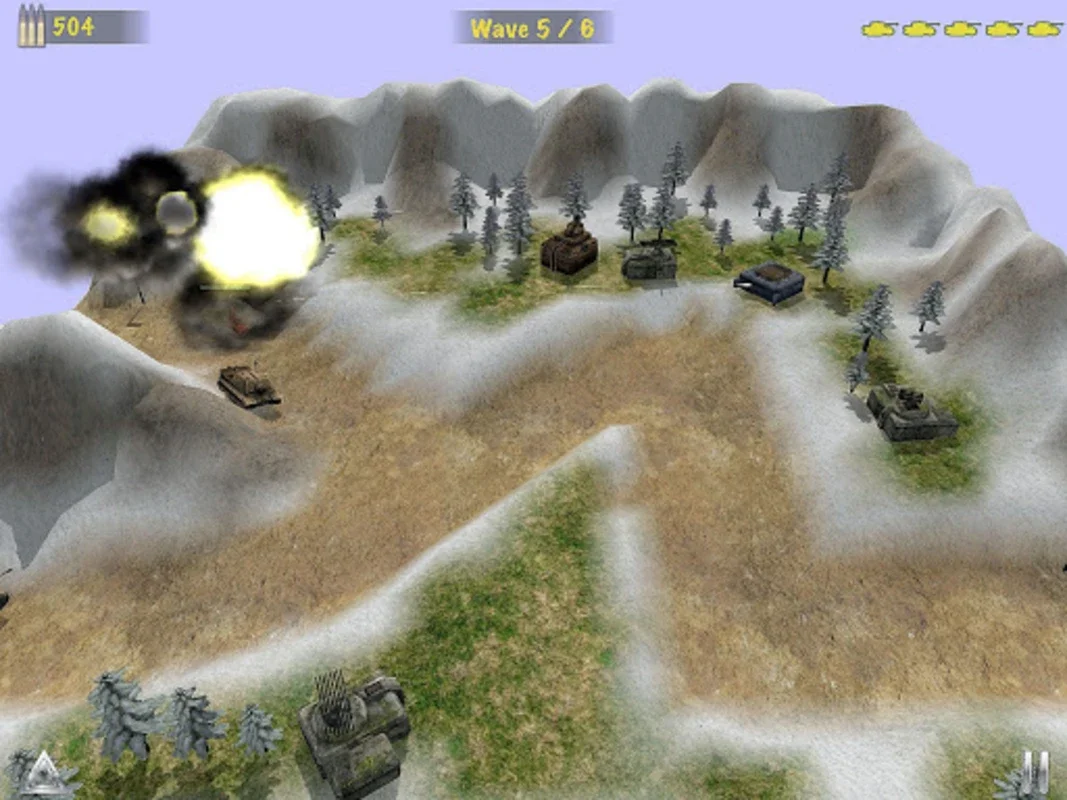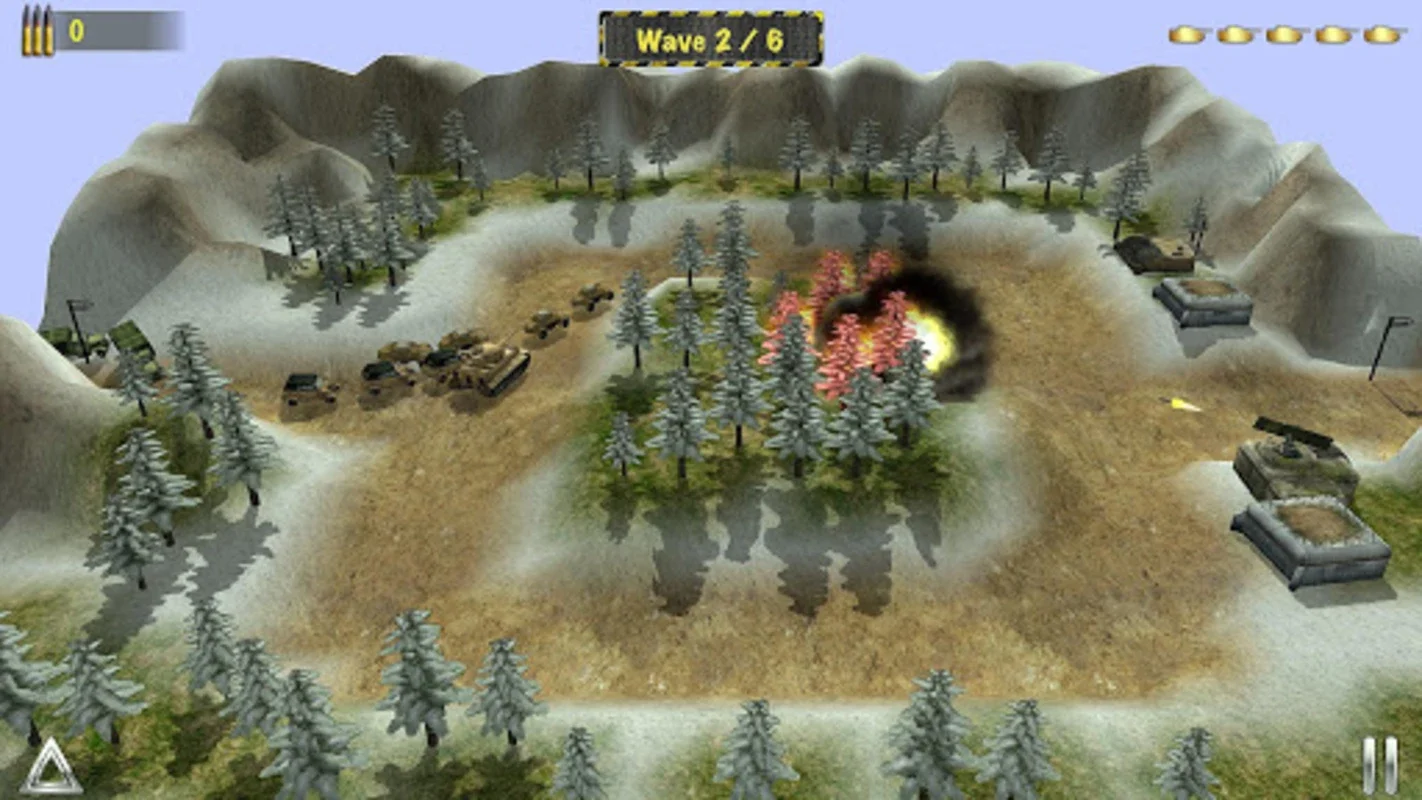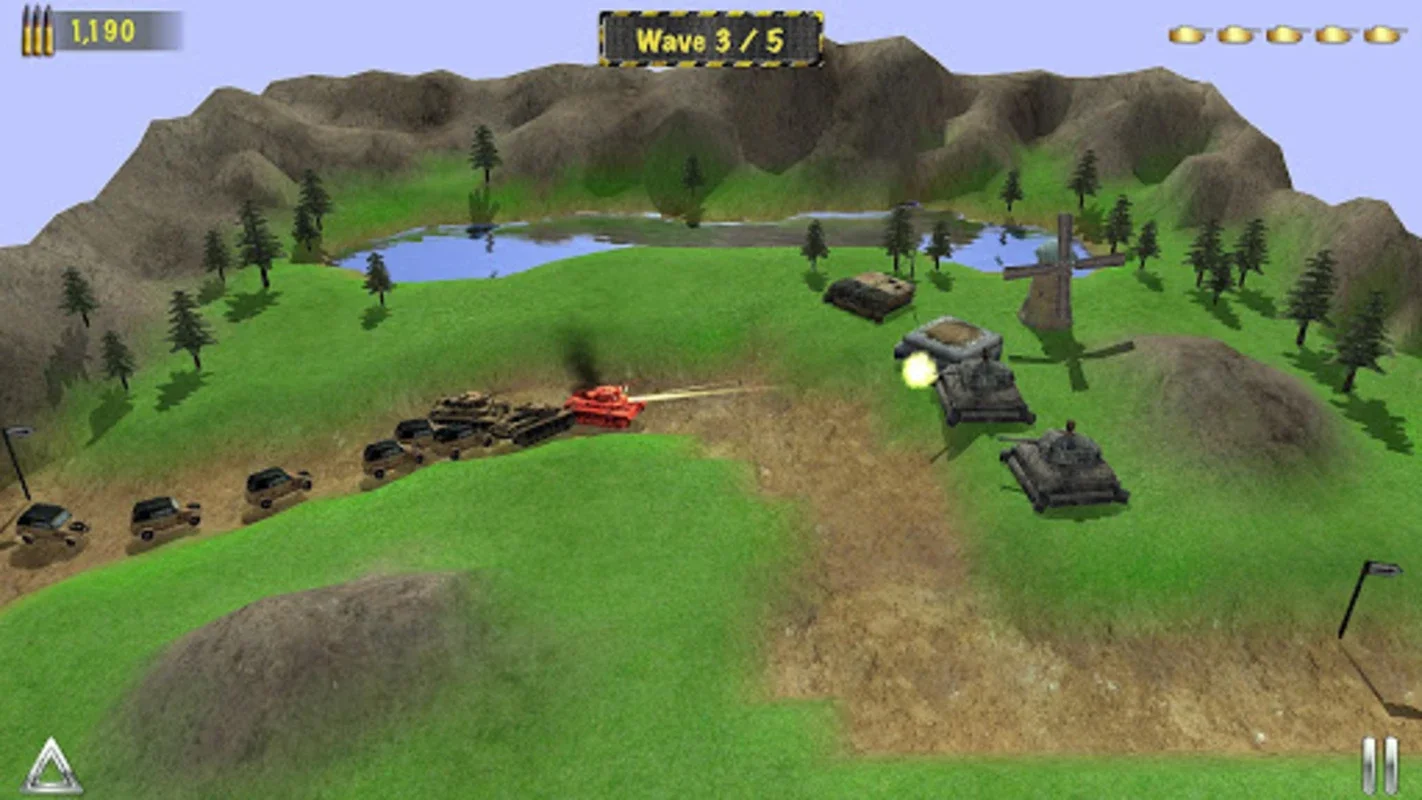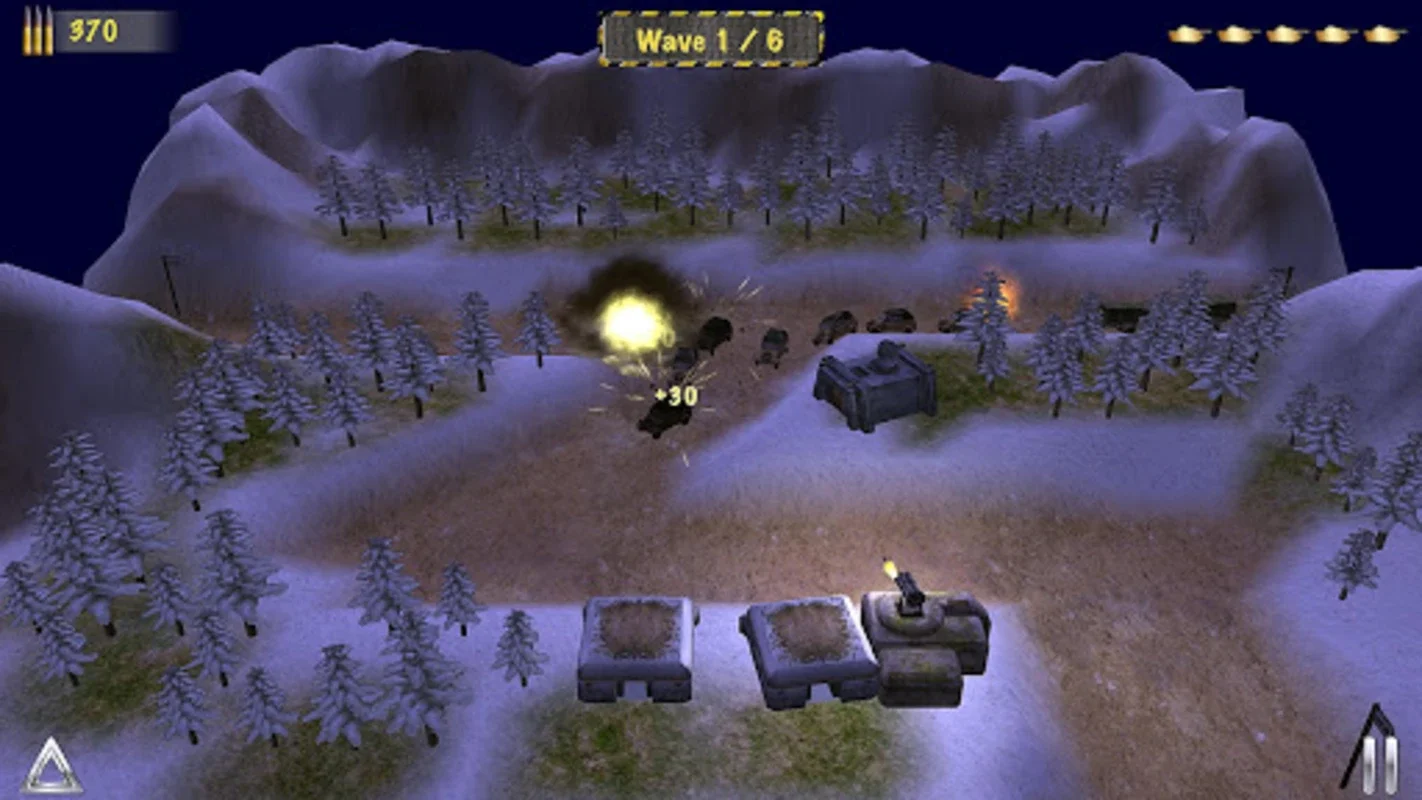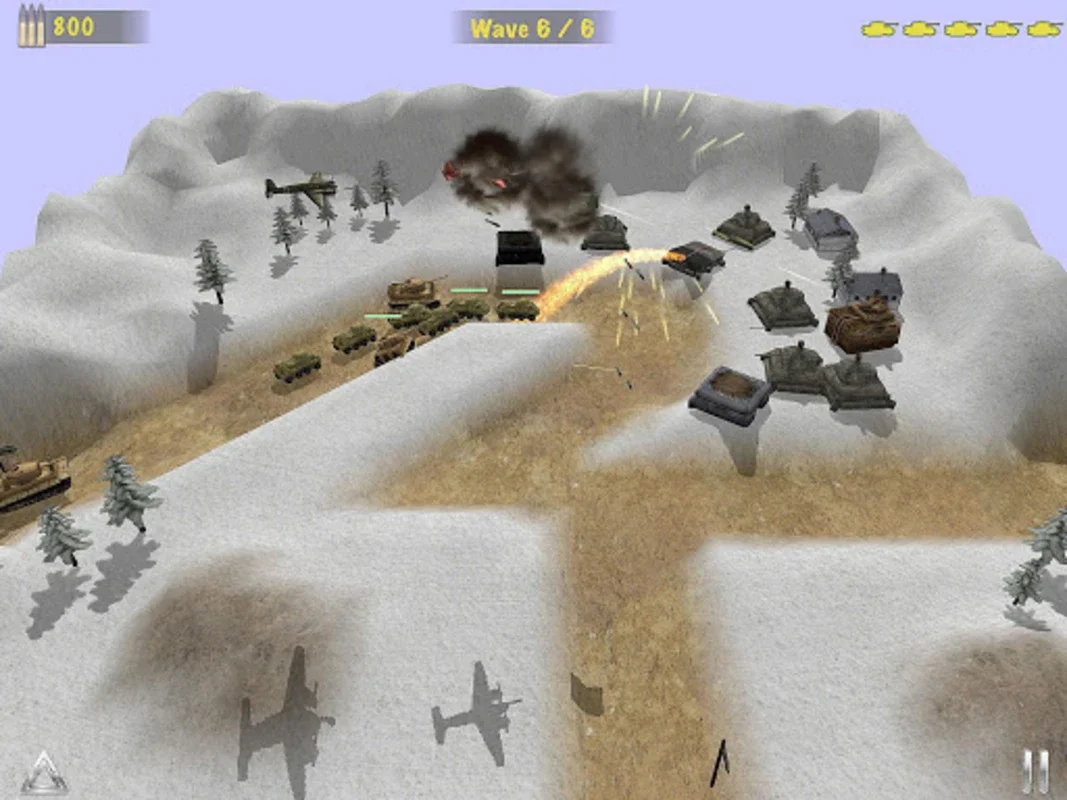Concrete Defense App Introduction
Concrete Defense stands as a remarkable entry in the world of tower defense games, transporting players to the harrowing battlefields of World War II. This game is not just about building defenses; it's about immersing oneself in a historical context while engaging in strategic combat and tactical planning.
The Essence of Authentic WWII Defense Gameplay
In Concrete Defense, players are bestowed with the responsibility of commanding a diverse array of military bunkers. These bunkers are not just simple structures; they are the cornerstone of your defense strategy. Each bunker type, be it the machine - gun emplacements that can mow down infantry units with rapid fire, the anti - tank emplacements capable of halting the advance of armored vehicles, or the fearsome flame throwers that can clear out groups of enemies in a blaze, offers a unique defensive capability. The ability to customize and upgrade these defenses adds a layer of depth to the gameplay. You can transform a basic bunker into a formidable stronghold, carefully choosing which upgrades will best suit the challenges that lie ahead.
The interactive battlefields in Concrete Defense are a testament to the game's strategic complexity. It's not enough to simply place your defenses haphazardly. You must engage in strategic path planning, anticipating the routes that the enemy will take. Resource management also plays a crucial role. You need to balance the allocation of resources between building new bunkers, upgrading existing ones, and deploying tactical support. This careful juggling act is what separates the novice players from the seasoned strategists.
Historic Campaigns and Formidable Enemies
The game's 40 challenging maps are a journey through some of the most iconic WWII campaigns. Take, for example, the Battle of Dunkirk. In this map, players are faced with the same challenges that the Allied forces faced during the real - life battle. The narrow beaches, the constant threat of enemy air and ground attacks, and the need to evacuate troops all add to the authenticity of the experience. Similarly, the Stalingrad Defense map recreates the intense urban warfare that took place in the real battle. The rubble - strewn streets, the close - quarters combat, and the desperate struggle for survival are all faithfully recreated.
The over 20 historically accurate enemy units further enhance the immersive nature of the game. When you see a Panzer III tank rumbling towards your defenses, you can't help but feel a sense of dread. These tanks were a formidable force during WWII, and in Concrete Defense, they are just as menacing. The B - 29 Bomber, with its ability to rain destruction from above, forces you to think about air defense strategies. Each enemy unit has been carefully modeled on its real - life counterpart, from their appearance to their behavior in battle.
Tactical Depth and Immersive Features
Concrete Defense offers a variety of gameplay modes to keep players engaged. The Campaign mode takes players on a structured journey through the historic battles, each level presenting new challenges and opportunities for strategic thinking. The Endless Defense mode, on the other hand, is a test of endurance and adaptability. As the waves of enemies keep coming, you must continuously adjust your defenses and tactics to survive.
Tactical support elements such as landmines, reinforcements, and combat barricades add another dimension to the gameplay. Landmines can be used to create deadly traps for enemy infantry and vehicles. Reinforcements can turn the tide of battle when you're outnumbered, while combat barricades can be used to funnel enemies into kill zones. These elements, combined with the stunning visuals and authentic sound effects, create a truly immersive experience.
The visuals in Concrete Defense are a treat for the eyes. The detailed models of the bunkers, the realistic animations of the enemy units, and the beautifully rendered battlefields all contribute to the overall atmosphere of the game. The sound effects, from the rattle of machine - gun fire to the thunderous explosions of artillery, further immerse the player in the chaos of WWII battlefields.
In conclusion, Concrete Defense is a game that offers a rich and engaging experience for fans of tower defense and WWII history alike. It combines strategic gameplay, historical authenticity, and immersive features to create a game that stands out in the crowded mobile gaming market.
The Strategic Element of Bunker Placement
Bunker placement is a crucial aspect of Concrete Defense. It's not just about putting bunkers wherever there is space on the map. You need to consider the terrain, the likely paths of the enemy, and the synergy between different bunker types. For example, placing anti - tank bunkers at choke points where enemy tanks are likely to pass can be a very effective strategy. Similarly, placing machine - gun bunkers in areas with good lines of sight to cover infantry movements is essential.
The Role of Resource Management
Resource management in Concrete Defense is a delicate balance. You start with a limited amount of resources, and you need to decide whether to invest in building new bunkers, upgrading existing ones, or saving for tactical support. If you over - invest in building too many bunkers early on, you may find yourself short of resources to upgrade them when the enemy becomes more powerful. On the other hand, if you hoard resources too much, you may not be able to build a sufficient defense in time to withstand the initial waves of enemies.
The Significance of Historic Accuracy
The historic accuracy in Concrete Defense is not just for show. It adds a layer of depth and meaning to the gameplay. When you're defending against enemy units that are based on real - life WWII military equipment, you feel a connection to the history. It makes the battles more than just a game; it makes them a reenactment of historical events, and you become a part of that history as you make strategic decisions to defend your positions.
